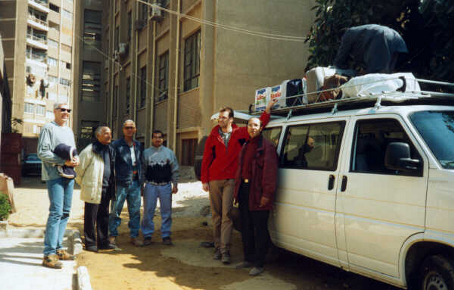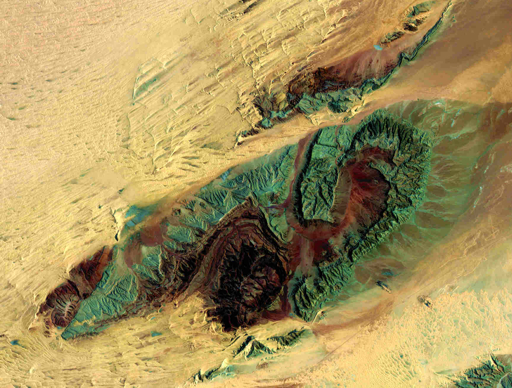On the genesis of Mesozoic sedimentary basins in Northeast Africa - Sedimentologic and paleontologic interrelationships with tectonic processes
Cooperation project between Bremen University and Ain Shams University, Cairo
Funded by the Volkswagen Foundation, Hannover
Seismic models across the basins indicate a progressively thickening of the Mesozoic sedimentary units towards the active bounding faults. We intend to reconstruct the pre-inversion tectonic processes of rift-induced uprising and subsiding blocks and the resulting sedimentologic-paleontologic processes within the late Jurassic - Lower Cretaceous "syn-rift" suite of the North Sinai. Besides new results to the poorly known tectono-sedimentary interrelationships of Mesozoic syn-rift suites, we expect synergetic effects within an interdisciplinary geoscientific group. This group brings together stratigraphic, (micro)paleontologic (ostracods, foraminifera, calcareous nannoplankton, algae, molluscs), sedimentologic and structural geologic expertise from both universities and associated partners.

Happy project partners anxious to leave for Sinai. (From left to right: Jochen Kuss, Amin Bassiouni, Adel-Ramadan Moustafa, Egyptian student, Robert Speijer and Mohsen Morsi. Also involved in the project, but not on this trip: Martina Bachmann. Picture by Heidi Müller)
Landsat image of Gebel Maghara (N. Sinai) and around, one of our prime study areas in the current research project. The core of the double plunging anticline consists of steeply dipping Jurassic platform deposits. These are overlain by gently dipping lower Cretaceous deltaic, middle Cretaceous ramp/platform and upper Cretaceous hemipelagic deposits.
Recently Heidi Müller completed her M.Sc. subproject entitled "Paleoenvironments and paleoecology of Aptian marginal marine deposits at Gebel Raghawi, Sinai (Egypt)"
Further associated and corresponding partners:
Dr Jens Lehmann (Bremen University), Dr Sebastian Lüning (Bremen
University), Dr Akmal M. Marzouk (Tanta University), Dr Markus Wilmsen
(Würzburg University)

